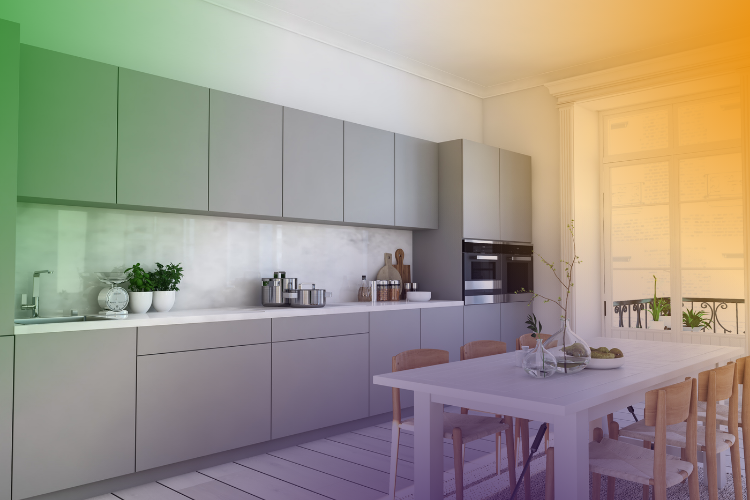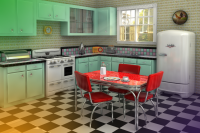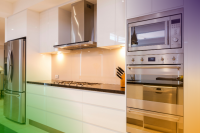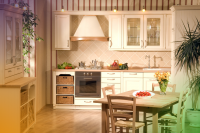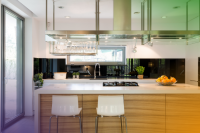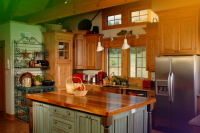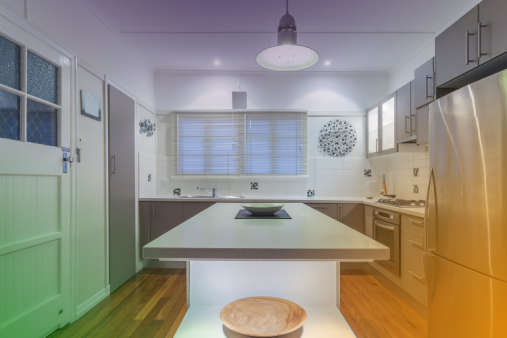The idea of kitchen cabinets without handles is nothing new, as this style of kitchen was all the rage in the 1960s and 1970s. The style has come back into fashion in recent years, as more people look for a kitchen which is sleek and streamlined, with no handles to break up the continuous lines. Handleless kitchens might be a design classic, but when you’re investing thousands in a new kitchen, is it the right choice for you? Although the temptation with any home renovation project is to dive straight into planning and shopping, might it be better first to take some time to consider the pros and cons of kitchens without handles to work out whether it’s the right choice for you?
What Do We Mean By a Handleless Kitchen Anyway?
As the name suggests, a handleless kitchen is one which doesn’t have any handles on the cupboards to help you pull them open. It’s a straightforward enough concept, but there is a wide range of design options and variations on the handleless idea which you should see on display in the major retailers and online. Each method of designing a kitchen without handles operates in a different way.
J-Pull Handleless Kitchens
This is perhaps the most common way of designing a kitchen without handles, and the one which was found on the kitchens of the 60s and 70s. J-pull describes the shape of a curve which is built into the top of the cupboard door, allowing you to hook your fingers into the groove of the door and just pull it open.
True Handleless
A true handleless kitchen provides a more streamlined, modern look, with a design which allows fingers to grip and pull the door without the groove found on the J-pull style of kitchens. Usually, the design allows users to open the door from either the side or the top.Push to Open Kitchens
Your third choice for a handless kitchen is a “push to open” design, with a catch hidden on the inside of the door which is released by gentle pressure. These are very easy to manipulate and can be opened by either hands or feet very simply.
Benefits of a Handless Kitchen
There are no rights and wrongs in kitchen design, and ultimately, the most important factor is getting a kitchen which works in the space you have available, and provides everything you need for your family. Once you have come up with the ideal layout of a kitchen with the help of a professional designer, many of the other choices about which style of units to buy or whether to have a glass or tiled backsplash are a matter of personal taste. If you want bright pink units and a sparkly silver backsplash, then what’s stopping you? The same goes for handleless kitchens. Some homeowners prefer them to other styles, others don’t. However, there are some general advantages and disadvantages of handleless kitchens which you should be aware of.
Advantage – Improved Safety
If you’ve ever caught a knee, elbow or anything else against a cupboard handle or knob, you’ll know how painful it can be. If you have no handles, there is nothing protruding to cause the bruises and bashes which may otherwise be experienced. It’s also something to think about if you have young children, especially toddlers who are prone to trips or falls. Your clothing may thank you too – no more catching your sleeves and ripping a hole in your favourite shirt.
Advantage – Modern Design Elements
Kitchens designed without handles can be elegant and streamlined, and will give a modern and contemporary feel to your kitchen design. Modern kitchens without handles come in all shapes and finishes, so choosing a handleless design shouldn’t limit your design choices.
Advantage – Space Saving
Lack of handles on kitchen cabinets can create a feeling of space in your kitchen, as there is nothing distracting the eye from the sleek lines of your kitchen units. Choosing a handleless design works well in a smaller, galley style kitchen too. Although handles will only add a couple of inches at most to the width of kitchen cabinets, this can make all the difference in a smaller room. For these reasons, handleless kitchens are also the default choice in open plan kitchen / dining areas.
Disadvantage – Cleaning Time
There are lots of factors influencing how long you’ll have to spend cleaning your new kitchen, but owners of handleless kitchens often find that dirt and dust will quickly start to build up in the recess which you use to pull the drawers or doors open. High gloss, shiny units are notorious for showing up finger marks, and if there is not a handle to grab, there is an increased likelihood of those finger marks ending up on surfaces. This is especially a consideration if you choose one of the push to open units.
Disadvantage – Cost?
In the recent past, it was certainly the case that handleless kitchens cost a bit more than the standard version with handles, but this isn’t really the case now. The increase in cost involved with making handleless doors or push to open mechanisms should be balanced against the cost of buying handles to fit to standard cupboard doors. Specialist fitting is really not a factor any more either, given that all kitchen fitters will be experienced in this style of units.
Disadvantage – Practicality
Handleless kitchens are not trickier to use than any other style of kitchen. But for some people, the design can make things awkward. If you have very long fingernails, you may struggle to get your fingers in the right position to open the doors. Similarly, people with mobility issues affecting wrists and hands, such as rheumatism or arthritis might find the design impractical and difficult for them to use.
Should I Buy A Handleless Kitchen?
Unfortunately, we can’t make that decision for you. The best advice is to take a trip to your local large kitchen showroom or DIY store. Spend some time looking round the various kitchens on offer to help you make up your mind.
